| Our review scope is the flagship 3-12 power M-223, that here is mounted on a STAG Arms Model 3 with integrated rails. Note that the M-223 mount is free through May of 2011 with a special promotion from Nikon. If you miss the promotion, buy the mount anyway. It is far better than random cheap scope rings and will make your AR-15 package look, feel, and perform like the advanced weapons system It was created to be. The official product shot of the 3-12 power model. Note that it has a parallax adjustment knob that the others in the line do not have. The 2-8 power model comes in two variations. One has the Nikoplex Reticle and Rapid Action Turret. The other has the BDC 600 Reticle, which is for holdovers instead of dialing in. My only complaint with these scopes is that I would have put the BDC 600 reticle on all of them, regardless of whether you get the Rapid Action Turret or not. The 1 to 4 power model is a very different animal compared to the others in the line. I would say it is meant as an alternative to a red dot “heads-up” sight like an Aimpoint or an Eotech. Forcing yourself to make that cheek weld is a shooters discipline that isn’t required with the red dots, but with this M-223 option, you have an “eyes wide open” sight at one power while retaining the ability to make a precision shot at 200 yards that isn’t covered by a 2-4 MOA red dot. . These are the 3 reticles as scanned from the M-223 manual, replete with the misspelling of Nikoplex. I found the quality of the Nikon turrets to be as good as a scope twice the price. They snap up, snap down, and the idea to match the distances to a specific factory ammo was genius. I would buy this scope in a heartbeat. The Rapid Action Turret (in the 3-12 and one of the 2-8 models) distances and BDC 600 reticle (in the other 2-8 model) were created specifically for a 55 grain bullet traveling at 3240 feet per second, like Hornady Tap FPD. I have not found another factory ammo that specifically lists velocity on the box. Hornady also lists the bullet drops, though in inches, not MOA as it is found on the turrets of the 2-8 and 1-4 power models of the M-223. It appears this line was specifically created for Hornady ammo, listed at 3240fps. These are the MOA adjustments as found in the Hornady Ballistics Calculator on their website. The Rapid Action Turret and BDC 600 take the math out of your head when you need to get the bullet on target. It is amazing stuff. |
Nikon Riflescopes
Bullet drop, and compensating for it, can be extremely confusing – even for those of us who are good in math. But bullet drop itself isn’t that complicated, especially if you always use the same factory ammo with the same bullet from the same manufacturer. Nikon took this realization, concept, whatever you want to call it, to the next level in their M-223 series and designed scopes that are specifically for the bullet drop of the .223/5.56 NATO cartridge.
You may ask yourself, “what, exactly, does it mean when they say an optic is created for a specific cartridge?” I was intrigued about this myself initially, because once you zero a rifle, the drop of the bullet is the drop of the bullet and you adjust according to “minutes of angle” or “mili-radians,” and what the caliber of bullet is or how fast it is traveling didn’t seem relevant to me as it applies to the scope itself.
So in reviewing the M-223, there was a lesson for me as well. Nikon has created three ways in which their scopes are created just for the bullet drop of the .223/5.56 NATO cartridge, or more specifically, for the 55 grain polymer tipped bullet traveling at 3240 feet per second. The 55 grain bullet is by far the most popular among all the ammunition manufacturers, but Hornady specifically engineers both their TAP FPD and Varmint Express to clock at 3240 fps.
The four scopes in the M-223 line are meant to detach the shooter from the math, so that under the pressure of making the shot, the shot itself isn’t lost in a puddle of brain consuming numbers that don’t always add up and multiply evenly. There is no math. You either dial in your distance, or hold it over inside the scope reticle, and the math is done for you, as long as you use the right ammunition.
Nikon is also trying to break the mold of how much scope you get for $300-$500 with this line. All of the M-223s are priced at MSRP in this range, and well below their comparative quality and features for a name brand scope.
These are some of the features:
- Four Inches of Eye Relief – Contrary to popular belief, this is not an optical term and has nothing to do with adjusting the scope to your eye. Take any scope and move it back and forth closer and farther away from your eye. Start with your arm extended and move it to your eye and out again. Extended you will see a small circle in the scope that you can see through. As you move it closer to your eye the field gets bigger and clearer until you are seeing the whole field of view through the scope. Move it too close and the circle begins to get small again. That distance of travel back and forth where the image is 100% is your eye relief, and you would mount the scope in the middle of that range where you can see the whole picture with a firm cheek weld on the stock. The Nikon M-223 series stays 100% for 4 inches of travel as you move the scope back and forth. That means that if you mount the scope on your rifle in the middle of that four inches (where you naturally cheek weld onto the stock), if you have to shoot quick and your head is not exactly where you normally would have it, you have two inches back and forth where you are going to see the entire field of view.
- ¼ MOA Click Adjustable Zero Return Turrets – We have all used scopes with caps that screw off to zero the rifle. With these Nikon turrets, and many high end tactical scopes, you lift the cap after you have zeroed and turn the turret to the zero. If you then dial the turret out, you can return to zero easily. There are plenty of cheap scopes coming in from China these days that have adjustable turrets, but in my experience the turrets are sloppy and the clicks are not positive. They also don’t return to zero accurately, and the clicks do not reflect constant values in where the bullet hits. To some degree you get what you pay for in scopes, but you can feel the quality difference in these Nikons, and I believe they have actually brought a new level of quality to this price point.
- Parallax Adjustment – Found only on the 3-12 power model, this is a feature few people understand, but for long shots you really can’t do without it. A parallax adjustment compensates for the different axis of the bore in relation to the scope. Keep in mind, with this M-223 series, this most expensive model has a retail of under $500. We are in the price range of deer rifle scopes with no adjustments whatsoever.
- Big Bright Field of View – As we’ve explained in other articles on optics, a lot of times, “you get what you pay for” applies to optics specifically because of the grade and alignment of the glass lenses themselves. And while I wouldn’t say that this M-223 series will compare to a $2,000 scope in clarity and brightness, there is no blur out whatsoever in the edges of the field of view. The entire circle is clean and crisp, and throughout the entire 4 inches of eye relief.
- High Quality Waterproof Housings – Made in the Philippines, not Japan as are many other Nikon products, the M-223 line doesn’t compromise in overall quality in my estimation, at all. The scope isn’t just water resistant; it is waterproof up to two meters for ten minutes. At the same price or lower as your average name brand deer scope with screw on caps, it appears that the Nikon M-223 is bringing expensive scope features down to a price that more people can afford.
- Integrated Rail Mounting System – At a retail of $99 for the mount, you’ll see in the pictures that Nikon really has provided the complete package for just about any law enforcement or tactical situation. (ed note: Through May of 2011 you can get this mount free with a special promotion from Nikon)
There are 4 scopes in the M-223 line. They are a 3-12 power, two 2-8 power models, and a 1-4 power. All four use a combination of the 3 methods to adapt themselves to the .223 cartridge.
The Nikoplex Reticle and Rapid Action Turret
Found on the flagship 3-12 power and one of the 2-8 models, the Nikoplex reticle is actually just a thick outer crosshair for quick acquisition and thin inner crosshair for long distance sight picture.
What makes the scope specifically for the .223 is the Rapid Action Turret. Once you zero the scope, if you use the right ammo, the turret can be turned to your distance calculation (or rangefinder determination) and hit right on by simply setting the distance on the turret.
No math, no approximating, and no holdover is required. With a rangefinder and the Rapid Action Turret, everything is done for you. There are lines on the turret starting at 100 yards and reaching out to 600 yards, which is the effective range of the .223 cartridge.
What does that calculate to in minutes of angle (MOA)? That’s the point, and what I originally didn’t understand about these scopes. Nikon has created an adjustment curve on the turret that is specifically lined up for the drop of the 55 grain bullet leaving the barrel at 3240 feet per second. With the right ammo (Hornady is the only one that lists velocity on the box), your calculations are done for you and you don’t have to remember that the .223 has a 3.5MOA drop at 300 yards, or any other distance. You can very easily “split the difference” on the adjustment between the 50 yard increments, and make an extremely precise shot with zero calculation.
The BDC 600 Reticle
The other 2-8 power has this unique reticle that is calibrated specifically for the same drops as the Rapid Action Turret, but you use holdover instead of turning the turret. When you zero the scope at 100 yards, it gives you points of aim in the reticle itself for 200-600 yards. This is the quickest acquisition possible of course, and many snipers prefer holdover to turret adjustment in police and battle situations.
If you have time, the turret does allow you to dial in your drop if you prefer. And because the .223 is so flat of a round, one turn of the turret gives you 20 minutes of angle, which covers out to 700 yards.
The Point Blank Reticle
A bare bones battle sight is the best option for police and military who need both eyes open and focused for multiple target acquisition, positional awareness and threat awareness. Found only in the 1-4 power model, the Point Blank Reticle is best at one power. The .223, zeroed at 100 yards, is 1.5 inches low at the muzzle and 2.7 inches high at 200 yards. This is considered “point blank” range for the cartridge and you can hold dead on within reason for “center mass” targets.
And again, if you have the time, this scope can suck your target picture in to 4 power, and you have 20 MOA adjustable at 1/4MOA clicks out to 700 yards. So you start with something of a “lowest common denominator” in a cheek weld optic for your AR, because you don’t want magnification in close quarters combat, but you have a full featured 20 MOA tactical scope if you need it. If you don’t know what is coming, a lowest common denominator with effective options can be your best bet.
How much scope you get for you money can take some research these days. An optic used to be a fairly “plain jane” purchase, but that is no longer the case. The international marketplace has brought a new level of quality and expectations to optics. The smart optics buyer will weigh the features, name brand, and personal preference, and ideally go check the scopes out in a gun shop, big box store, or sporting goods retailer.
If you don’t have the ability to go actually to a store, and you plan to purchase an optic online without holding it in your hand first, I feel the Nikon M-223 series is a good buy with features that work. You will not be disappointed, and if you need to make a shot at 225 yards, your brain will be grateful you got it.


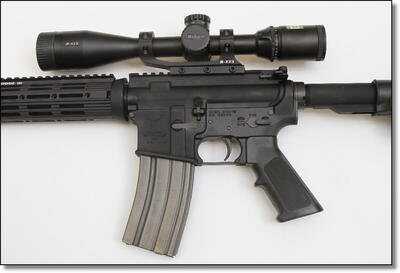
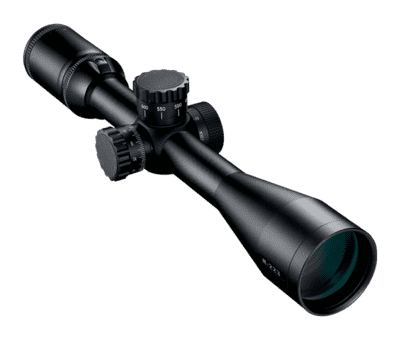
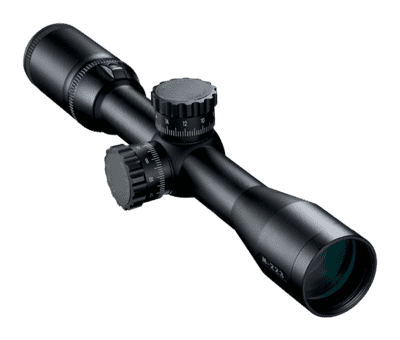

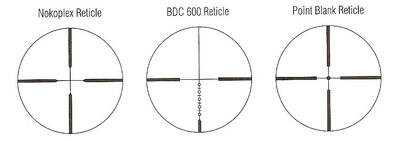
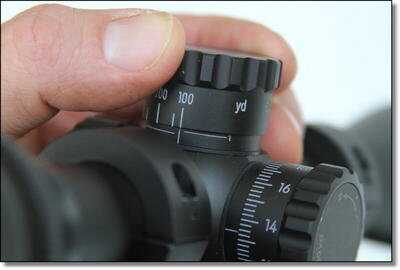
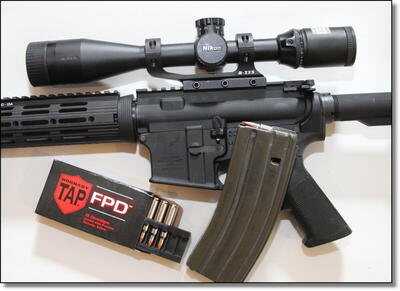
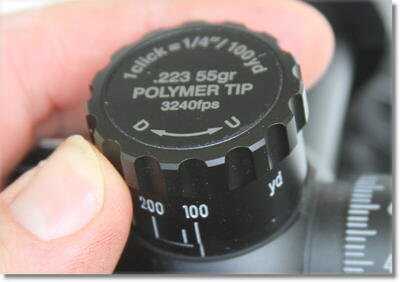
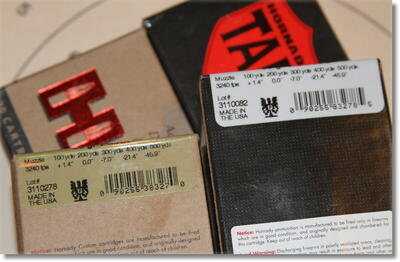
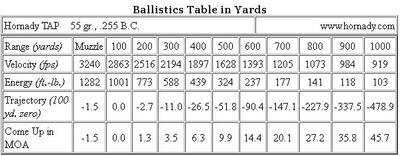
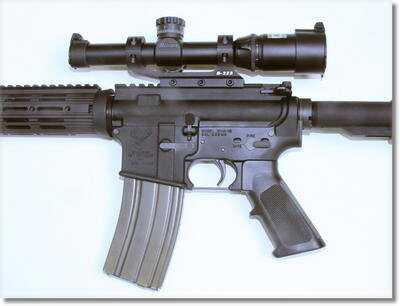
Hard to judge value and interest if there isn’t a price….What is the price?
Does Nikon offer any way to adapt the Rapid Action Turret to be used with loads other 55gr @ 3240fps? I would love to get one of these scopes but I like shooting a 75gr HPBT.
Thanks, Tony
You say zeroed at 100 yards and 2.7 inches high at 200 yds. What gives?
By the way 4 inch eye relief does not give you 4 inches of head movement and image staying at 100 percent and centered.
I mounted the 3-12 Nikoplex model on my Stag Model 6 24″. Shooting the Hornady V Max 55 gr at the specified fps 3240 at the range we were shooting holes in holes sub moa at 100yrds, and shooting small tangerines at 250, shooting clays at 300-450. this is nuts.
Federal XM193 shot a second best at sub moa at 100 yrds though the velocity is not listed its close.
I have more expensive scopes on a few other guns but a great product that I was skeptical about at first. absolutly rediculous.
Hi Paul, I bought a 3x12x42 nikoplex. When I rotate the side focus/rangefinder knob I do not notice a difference. On all of my other scopes this adjustment is very noticeable and nessary.
When you rotate your focus knob does it vary from perfect focus to total fuzz or is it very slight? Thanks
Is there a M308 in the future ?
Don’t know, but we are reviewing a couple Zeiss scopes that are specifically for the .308 168gr bullet.
What is the problem with the manufacturing of the ring mounts in the USA that the government is stopping or not?
I dont know there was nothing in the documentation about it so I think it is more a job for the chronograph and the long range.
In reference to bullet drop for a 16 vs a 24…I thought, on average, you could expect 20 to 30FPS drop for every inch of barrel loss? I wonder if Nikon may have split the difference and used a 20in barrel for calculations.
Thanks
I’m confused about something. The article refers to the 3240fps Hornady round and seems to indicate that the M-223 scope on the Stag model 3 would be a match. The bullet drop for this round through the 24″ test barrel that Hornady uses is very different from the drop of the Stag’s 16″ barrel. What gives?
That is going to be part two of this. We had to send the mount back because they needed it for another reviewer. Part two is going to be to actually clock them out of the STAG and test the hits downrange. I suspect the .223 is flat enough that even 100pfs isn’t going to make a major change within the effective true range of the cartridge.
Hkow much does it cost. SRP. Please, Thank you, Kelly.
I have the 1-4 model and it is a good scope. It does have one
fault. To lock the turrets from moving, it must be pulled up.
While pulling my rifle from a assualt case, the turrent got pushed
down and turned. This was during a USPSA match. Needly to say,
I missed the target 3-4 times until I figured out the problem.
The turrents should lock to prevent inadvertent movement.
Who is making the scope mounts and rings this is a market we are in and would like to make them givin an opportunity since they are so backed up we have cnc mills and lathes. thanks for your quick reply.
Dennie Daugherty
I don’t know but I believe they are made also in the Philippines. Until we get rid of EPA and OSHA the potential for bringing this stuff back on shore is slim and none. It isn’t the unions people. It is government!